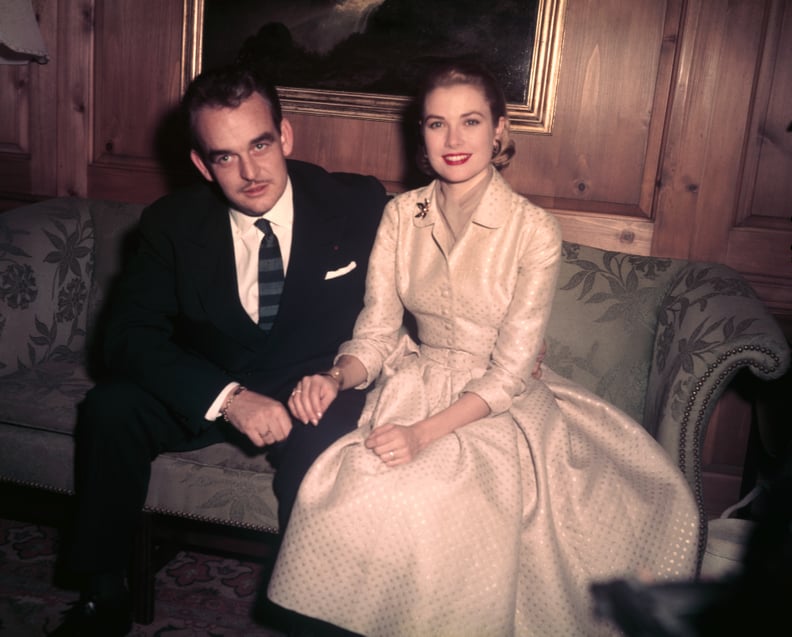Royal romance has long captivated the imagination of the public, showcasing not only the glamour associated with nobility but also the intricacies of human connection. Grace Kelly, an American actress turned princess, epitomized this allure through her unexpected romance with Prince Rainier III of Monaco. Their love story is replete with serendipity, cultural clash, and an undeniable spark that ignited a fairy tale relationship in the mid-20th century.
The narrative begins in the sun-soaked streets of Cannes, France, during the illustrious 1955 Cannes Film Festival. Grace Kelly was riding high on her newfound fame, having been nominated for an Academy Award for her performance in “The Country Girl.” This glamorous event served as a backdrop for her fortuitous encounter with Prince Rainier III, who was attending the festival incognito to scout potential brides.
Grace, embodying the elegance of a Hollywood star, was different from the aristocratic women the prince was usually surrounded by. Although, her beauty and poise did not escape Rainier’s attention. During a chance meeting organized by the press, where she posed for photographs, the connection between the two was instantaneous. For Rainier, Grace represented not just physical allure but also the ideal partner who could infuse freshness into the solemnity of royal duties.
However, this relationship was not merely a dalliance; it was fraught with the weighty expectations associated with royalty. Rainier was under pressure to marry and produce an heir to ensure the continuation of his family lineage. Moreover, Monaco faced political tensions, and a strategically advantageous marriage could bolster international relations. Grace’s illustrious Hollywood background added an additional layer of complexity. Would she be willing to surrender her acting career and privacy for royal life?
After their initial meeting, Rainier began a courtship characterized by grand gestures. He extended invitations for Grace to visit Monaco, showing her the splendour of his principality. Meetings in glamorous locales, coupled with intimate evenings spent discussing their dreams and future aspirations, deepened their bond. Yet, on the flip side, Grace grappled privately with the monumental decision of leaving her vibrant career in Hollywood for the often stifling expectations of royal life.
As the months rolled by, a blend of exhilaration and trepidation permeated their relationship. Grace was enamored by Rainier’s charm, intellect, and dedication to his duties as a sovereign. Yet, she was acutely aware of the sacrifice that awaited her. Would her life as a princess be filled with relentless scrutiny? Could she adapt to the rigorous demands of her new role? Each foray into the royal world punctuated her often conflicting desires.
In 1956, their romance took a pivotal turn when Rainier formally proposed to Grace, gifting her a stunning diamond engagement ring. The announcement made headlines worldwide, capturing the hearts and imaginations of millions. The engagement was heralded as the union of Hollywood glamour and European royalty, marrying the worlds of fantasy and reality. Yet this was not just a romantic gesture; it was a calculated move that had tangible implications for both Monaco and Grace.
As the wedding preparations commenced, the pressures mounted. Grace’s transformation from an actress to a princess was no small feat. Delving into her newfound responsibilities required transitioning from the carefree lifestyle of a film star to becoming an emblem of monarchy. Her elegance and composure during this transition were remarkable. Grace approached the situation with poise, embodying the very essence of a princess even before the official ceremony.
The wedding took place on April 18, 1956, and was regarded as a spectacle on par with the splendor of royal marriages. The world watched as Grace walked down the aisle, her poise unmistakable, instantly rendering her a global icon. The nuptials marked the beginning of a partnership that would endure all the trials and tribulations of monarchical life. Rainier and Grace Kelly exchanged vows in a ceremony best described as a gracious blending of two vastly different cultures.
Post-marriage, Grace dedicated herself to her role as Princess of Monaco. She embraced philanthropic endeavors focusing on the arts, children, and the preservation of Monaco’s culture, forever altered but unfaltering in her commitment to her duties. While she found fulfilment in her noble responsibilities, the legacy of her cinematic past lingered. Grace remained a symbol of beauty and grace, effectively merging her artistic identity with her royal obligations.
Even amidst the trappings of her new life, Grace Kelly never entirely severed her ties to the world of film. Her allure and elegance would often translate into high-fashion opportunities, and her poise became the subject of admiration worldwide. Nevertheless, her path was not without its challenges. The pressures of public life and the scrutiny that followed weighed heavily on her. Rainier and Grace navigated the tumultuous waters of their relationship while balancing the expectations placed upon them.
Ultimately, Grace Kelly’s meeting with Prince Rainier III burgeoned into a love story that transcended the confines of nobility and celebrity. They were partners in the truest sense, united by a bond that was both a romantic fairy tale and a multidimensional alliance built on mutual respect and understanding. Their journey offers a unique perspective on the sacrifices entwined with royal life, love, and the perpetual quest for personal identity amidst the legacies mapped out by tradition.
Thus, the fascinating story of how Grace Kelly met Prince Rainier III exemplifies the beautiful yet complicated nature of love, where expectations and reality often collide. Theirs is a narrative of evolution, reflection, and resplendence, a testament to the enduring power of love that whittles down even the staunchest of barriers.

